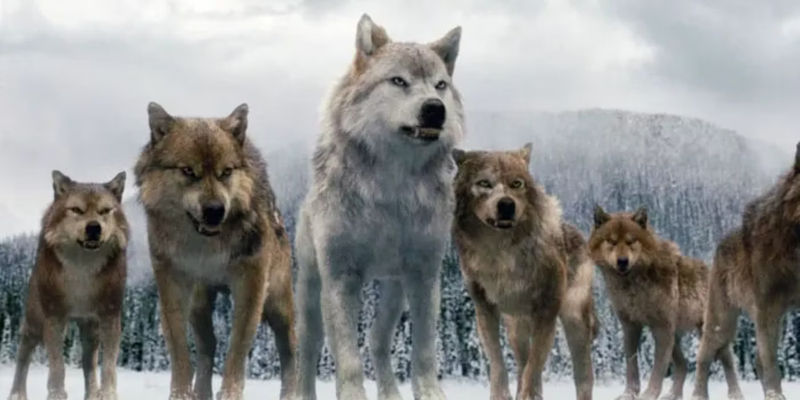
10 Misconceptions About Animals in Movies

Exploring the Truth Behind Common Movie Myths About Animals
1.Sharks Can Smell Blood From Miles Away
They Actually Lack Such Sensitive Sniffing Capabilities
Movies often portray sharks as bloodthirsty predators capable of detecting a drop of blood from miles away. However, the truth is that sharks do respond to blood but cannot smell it over long distances. The sensationalized myth of their heightened sense of smell perpetuated by films like Jaws only serves to misinform audiences about these fascinating creatures.
The Reality of Shark Sensory Abilities
- Sharks do have a highly developed sense of smell, but it is not as sensitive as depicted in movies.
- Their olfactory system allows them to detect chemical signals in the water, including blood.
- However, their range of detection is limited to approximately 100 meters, not miles away as commonly believed.
Chrissy being attacked in Jaws - They Actually Lack Such Sensitive Sniffing Capabilities - Sharks Can Smell Blood From Miles Away
2.Mothers Abandon Baby Birds Touched By Humans
Most Birds Lack the Ability to Detect Human Odor
Contrary to popular belief perpetuated by movies like Fly Away Home, handling baby birds does not lead to abandonment by their mothers. Most birds lack the ability to detect human odor and prioritize protecting their young. The myth of abandonment due to human scent misrepresents the natural instincts of birds and can discourage necessary interventions to help injured or fallen nestlings.
Understanding Bird Parental Behavior
- The bond between bird parents and their young is typically strong, and they prioritize their offspring's well-being.
- Birds rely on visual and auditory cues more than scent to recognize and care for their young.
- Abandonment of baby birds is rare and usually occurs due to factors such as illness or injury, not human interference.
Anna Paquin with baby ducks in Fly Away Home - Most Birds Lack the Ability to Detect Human Odor - Mothers Abandon Baby Birds Touched By Humans
3.Dogs Are Color Blind
Dogs do Indeed Perceive Colors
While the myth of dogs being colorblind has persisted, the truth is that they do perceive colors, although not in the same spectrum as humans. Dogs may not see the full range of colors, but they are not colorblind as commonly believed. Movies like Cats & Dogs that portray dogs as seeing only in black and white overlook the nuances of canine vision and intelligence.
The Complexity of Canine Vision
- Dogs have dichromatic vision, meaning they have two types of color receptors in their eyes.
- They can perceive colors, such as blue and yellow, but have difficulty distinguishing between red and green.
- Contrary to the popular misconception, dogs have a more limited color perception compared to humans, but they are not completely colorblind.
Two dogs by a Christmas tree in Puppies Crash Christmas - Dogs do Indeed Perceive Colors - Dogs Are Color Blind
4.Cockroaches Can Survive A Nuclear Blast
They Would not Survive the Radiation
The myth of cockroaches surviving a nuclear blast is a popular trope in post-apocalyptic movies. However, the reality is that cockroaches, while resilient insects, would not survive extreme radiation exposure. Movies like Wall-E may depict them as survivors, but in truth, the intense blast and radiation from a nuclear explosion would overwhelm their biology like any other organism.
The Limits of Cockroach Resilience
- Cockroaches are known for their ability to adapt to various environments and survive harsh conditions.
- However, their resilience does not extend to withstanding the lethal effects of nuclear radiation.
- The myth of cockroaches surviving nuclear blasts is an exaggeration that ignores the impact of extreme radiation on living organisms.
Wall-E looking at a cockroach - They Would not Survive the Radiation - Cockroaches Can Survive A Nuclear Blast
5.Bulls Hate The Color Red
Bulls Lack the Capacity to Even Process the Color Red
Contrary to cinematic portrayals of bulls being provoked by the color red, bulls are actually colorblind to that wavelength. The myth of bulls charging at red flags stems from a misunderstanding of their visual perception. In reality, bulls are attracted to movement stimuli, not specific colors like red. Movies that perpetuate this myth distort the natural behavior of bulls for dramatic effect.
Understanding Bull Behavior
- Bulls are dichromats, similar to dogs, and have limited color vision.
- They are unable to distinguish between red and other colors like green or blue.
- Bulls are attracted to movement and respond to the perceived threat, rather than the color of the object.
Ferdinand in the arena with a matador - Bulls Lack the Capacity to Even Process the Color Red - Bulls Hate The Color Red
6.Sleeping Cows Can Be Tipped
An Act That is Basically Impossible
The comedic depiction of cow tipping in movies like Tommy Boy is far from reality. Cows, with their immense size and strength, cannot be tipped over while sleeping. This common myth about cows being easily manipulated ignores their defensive capabilities and misrepresents these gentle creatures as passive targets for human amusement.
The Strength and Stability of Cows
- Cows are large and powerful animals, weighing up to thousands of pounds.
- Their low center of gravity and four-legged stance provide them with exceptional stability.
- Tipping over a cow would require an immense amount of force, making it practically impossible.
Tommy Boy with a Cow - An Act That is Basically Impossible - Sleeping Cows Can Be Tipped
7.Ostriches Hide By Sticking Their Heads In The Sand When Scared
Instead, They Rely on Fight or Flight Responses
The myth of ostriches burying their heads in the sand when scared is a popular misconception perpetuated by movies. In reality, ostriches rely on their powerful legs and speed to escape danger, displaying a fight or flight response like many other animals. Depicting ostriches as burying their heads misrepresents their natural survival instincts and abilities.
Ostriches' Survival Strategies
- Ostriches have excellent eyesight and are constantly vigilant for potential threats.
- When faced with danger, their instinct is to either flee at high speeds or confront the threat with powerful kicks.
- The myth of ostriches burying their heads in the sand is a misinterpretation of their behavior and underestimates their survival skills.
Three ostriches with their heads in the sand - Instead, They Rely on Fight or Flight Responses - Ostriches Hide By Sticking Their Heads In The Sand When Scared
8.Elephants Use Their Trunks To Drink Like Straws
An Elephants Trunk is Not Connected To Its Throat
Movies often show elephants drinking water by sucking it up their trunks like straws, but the reality is quite different. An elephant's trunk, while versatile, does not function like a straw with direct access to their throat. Elephants use their trunks to suck up water partway before transferring it to their mouths, showcasing the intricate and specialized nature of this unique appendage.
The Complexity of Elephant Trunks
- An elephant's trunk is a remarkable adaptation, serving various purposes such as breathing, smelling, and grasping objects.
- When drinking water, elephants use their trunks to suck it partway into their trunk, creating a temporary reservoir.
- They then transfer the water from their trunk to their mouths, much like using a straw but with an intermediate step.
Dumbo drinking in Dumbo - An Elephant’s Trunk is Not Connected To Its Throat - Elephants Use Their Trunks To Drink Like Straws
9.Lions Have Kings
Lion Social Structures are Egalitarian
Contrary to the royal hierarchy depicted in movies like The Lion King, lion prides do not operate under a kingship. Leadership among lions is based more on age and breeding capabilities rather than a monarchical system. While the idea of lion kings adds drama to films, it misrepresents the true social dynamics of these majestic animals.
The Reality of Lion Prides
- Lion prides consist of related lionesses and their offspring, led by a dominant male lion.
- The dominant male's leadership is not akin to a king, but rather a result of his ability to protect and provide for the pride.
- Leadership within lion prides can change based on various factors, including the physical condition and reproductive success of individual lions.
Simba singing with Timon and Pumbaa in The Lion King - Lion Social Structures are Egalitarian - Lions Have Kings
10.Wolves Are Dangerous Towards Humans
Wolves are Non-Violent Towards Humans
The portrayal of wolves as dangerous predators in movies often instills fear of these animals. However, wolves are naturally averse to human contact and pose little threat to humans unless provoked. Contrary to the menacing depictions in films, real wolves prioritize avoiding conflicts with humans, showcasing a more nuanced and peaceful relationship between the species.
The True Nature of Wolves
- Wolves are highly intelligent and social animals that primarily prey on ungulates such as deer and elk.
- They have a natural fear and avoidance of humans, which has been ingrained through centuries of human-wolf interactions.
- Wolf attacks on humans are extremely rare and are usually the result of unusual circumstances or human encroachment on their territories.
Wolves in Twilight Breaking Dawn - Wolves are Non-Violent Towards Humans - Wolves Are Dangerous Towards Humans

















